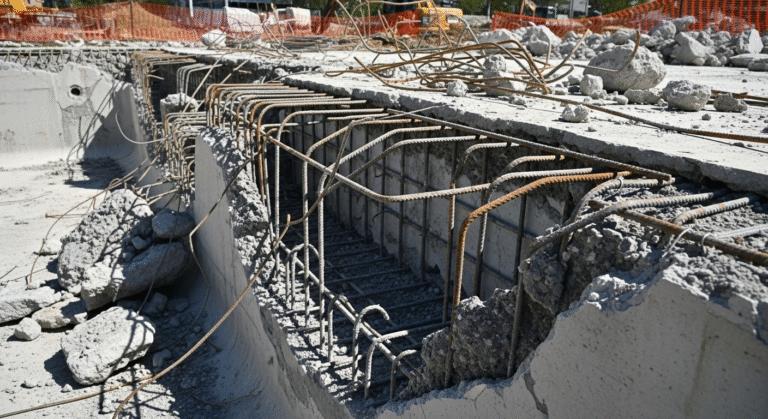Cost Analysis of Pool Removal: Essential Factors and Savings Breakdown
When considering a pool removal project, one of the primary concerns for homeowners is the cost involved in the process. The average cost of pool removal can vary greatly depending on factors such as the size of the pool, the complexity of the project, the type of pool, and the method chosen for removal. In this article, we will discuss the cost analysis of pool removal, including comparisons between do-it-yourself (DIY) projects and hiring a professional service.
Before diving into the specifics of pool removal costs, it is crucial to understand the difference between DIY and professional services. A DIY pool removal project might seem like a more economical option when compared to hiring a professional; however, it comes with certain risks and challenges. On the other hand, hiring a professional pool removal service ensures that the project is carried out safely and efficiently while preserving the value of your property.
There are a few methods for removing a pool, and each has its unique cost structure and complexity. The goals and needs of the homeowner determine the chosen method. Understanding these factors and their implications on the cost will help property owners make an informed decision on the most appropriate removal strategy. In the following sections, we will delve deeper into these considerations, providing insights into each aspect of the cost analysis.
Understanding Pool Removal Options
When considering the removal of a pool, it’s essential to understand the various pool removal options available in order to make an informed decision. In this section, we will discuss the types of pool removal and how to choose the right removal method for your specific situation.
Types of Pool Removal
There are several methods for removing a pool, each with its own benefits and drawbacks. Some of the most common methods include:
- Full Pool Demolition: This method involves completely demolishing the entire pool structure, including spa and deck if present, and removing all materials from the site. This is typically the most labor-intensive and costly option, with labor costs comprising a significant portion of the total pool removal costs.
- Partial Pool Demolition: In this method, the pool’s upper portion is demolished while the lower part is left intact. This option, sometimes referred to as pool fill-in, is usually less expensive than a full pool demolition because it requires less labor and material removal.
- Deck Removal: This process involves removing the pool surround, often a deck, and leaving the pool intact. This may be done in conjunction with either full or partial pool removal.
These methods can be applicable to both inground pool removal and above-ground pool removal, with the specific approach and costs varying based on pool size, materials, and type.
Choosing a Removal Method
When selecting the best pool removal method for your situation, consider the following factors:
- Type of Pool: The kind of pool you have (inground or above-ground) will influence the removal method, as certain techniques may not be suitable for all pool types.
- Pool Material: The pool’s material, such as concrete, vinyl, or fiberglass, will affect the labor cost and overall pool removal costs. Concrete pools, for example, tend to require more labor and result in higher costs.
- Pool Size: Larger pools will typically require more labor and time to remove, resulting in higher pool removal costs.
- DIY vs. Professional: Although some pool removal tasks can be completed as a DIY project, such as above-ground pool removal or deck removal, inground pool removal generally requires the services of a professional. Keep in mind that hiring a professional will increase the overall cost, but it may also save time and ensure proper execution.
- Full vs. Partial Removal: Deciding between full pool demolition and partial pool fill-in will depend on your specific needs, such as whether you plan to use the space for a different purpose, local regulations, and budget considerations.
By considering these factors, you can make a confident and knowledgeable decision on the pool removal method best suited to your needs and budget.
Factors Influencing Removal Costs
When considering the cost of swimming pool removal, several factors can significantly influence the final price. This section will discuss some of the main aspects, including geographic variations, removal complexity, and additional costs.
Geographic Variations
The location of the pool can greatly impact the overall cost of the project. Factors such as the city, state, and accessibility to the pool area play a crucial role in determining the final price. Some states have higher labor costs, while others may have specific regulations and permits requirements, increasing the overall cost of the project. Additionally, pools in urban areas might have higher disposal and transportation fees.
- Accessibility: If the pool removal company has limited access to the pool site, they may need additional equipment or more labor, increasing the cost.
- Landscaping: In some cases, removing a pool may also require removal or modification of fences, stairs, or other landscape features, further adding to the expense.
Removal Complexity
The complexity of the pool removal process depends on factors such as the pool’s construction materials and the desired removal method. There are three main types of pool construction: vinyl, fiberglass, and gunite (or concrete).
| Pool Type | Removal Complexity |
|---|---|
| Vinyl | Low |
| Fiberglass | Medium |
| Gunite (Concrete) | High |
Complete pool removals, where every aspect of the pool is removed, typically involve higher costs compared to partially removing the pool. When removing a pool, some aspects to consider include:
- Drainage Issues: Some pools may have chemicals like chlorine remaining in them, which need to be dealt with before removal. Pool draining may also involve addressing drainage issues, which can add to the cost.
- Plumbing: Removal of the pool’s plumbing system can be complex and costly, depending on the installation method.
- Backfilling: After removing the pool, the area needs to be filled with dirt, gravel, or other fill material. The cost for this process depends on the size of the pool and the required fill material (typically charged per cubic yard).
Additional Costs
There are several other potential costs involved in a pool removal project, including:
- Permits: Depending on the location, permits may be required for carrying out pool removal, adding to the overall cost.
- Disposal Fees: Responsible disposal of concrete, vinyl, fiberglass, and other debris generated during the removal process may incur additional fees.
- Landscaping and Landscape Repair: The area around the pool may require repairs or new landscaping after the pool removal, which can drive up costs.
- Soil Stabilization Fabric: In some cases, soil stabilization fabric is needed to prevent erosion and maintain the structural integrity of the backfilled area, adding another cost factor to the project.
In general, the total cost of pool removal can vary greatly depending on the factors outlined above. It is essential to consult a professional pool removal contractor to get accurate estimates and project-specific information before undertaking a pool removal project.







